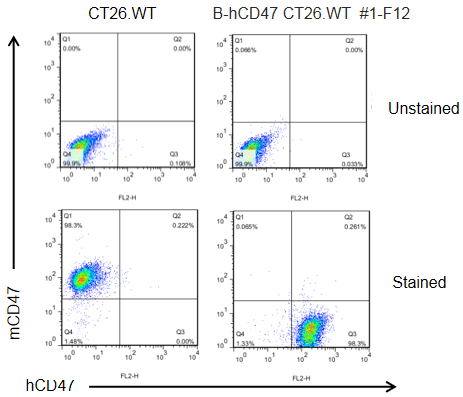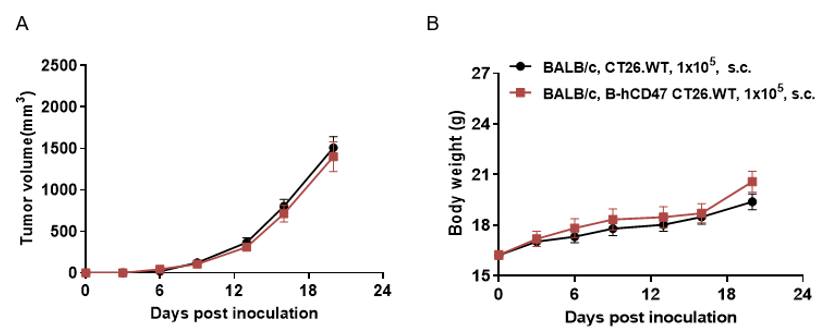B-hCD47 CT26.WT
|
Common name |
B-hCD47 CT26.WT | Catalog number | 310702 |
| Aliases | IAP, MER6, OA3 | Disease | Colon carcinoma |
|
Organism |
Mouse |
Strain | BALB/c |
| Tissue types | Colon | Tissue | Colon |
The mouse Cd47 gene was replaced by human CD47 gene in B-hCD47 CT26.WT cells. Human CD47 is highly expressed on the surface of B-hCD47 CT26.WT cells.
Application
Gene targeting strategy for B-hCD47 CT26.WT cells. The IgV domain on exon 2 of mouse Cd47 gene was replaced by the IgV domain of human CD47 on exon 2 in B-hCD47 CT26.WT .

CD47 expression analysis in B-hCD47 CT26.WT cells by flow cytometry. Single cell suspensions from wild-type CT26.WT and B-hCD47 CT26.WT cultures were stained with species-specific anti-CD47 antibody. Human CD47 was detected on the surface of B-hCD47 CT26.WT cells but not wild-type CT26.WT cells. The 1-F12 clone of B-hCD47 CT26.WT cells was used for in vivo experiments.

Subcutaneous homograft tumor growth of B-hCD47 CT26.WT cells. B-hCD47 CT26.WT cells (1x105) and wild-type CT26.WT cells (1x105) were subcutaneously implanted into BALB/c mice (female, n=5). Tumor volume and body weight were measured twice a week. (A) Average tumor volume ± SEM. (B) Body weight (Mean± SEM). Volume was expressed in mm3 using the formula: V=0.5 X long diameter X short diameter2. As shown in panel A, B-hCD47 CT26.WT cells were able to establish tumors in vivo and can be used for efficacy studies.









